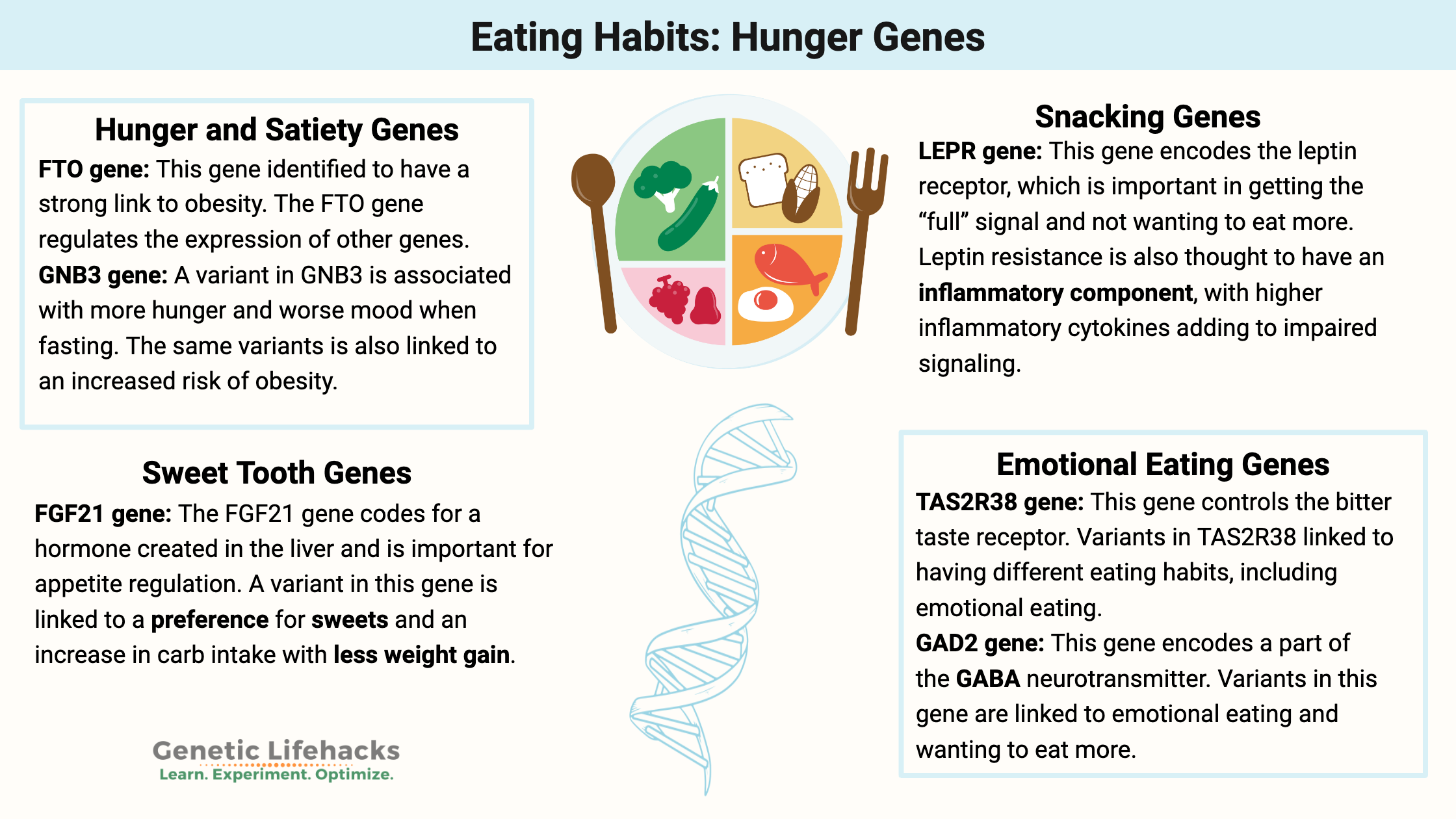Our genes influence our eating habits, often in ways we aren’t consciously aware of! If you are struggling with your eating habits, understanding your genetic variants may give insight into why and how to change your eating for the better.

Our genes influence our eating habits, often in ways we aren’t consciously aware of! If you are struggling with your eating habits, understanding your genetic variants may give insight into why and how to change your eating for the better.